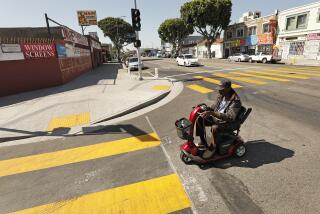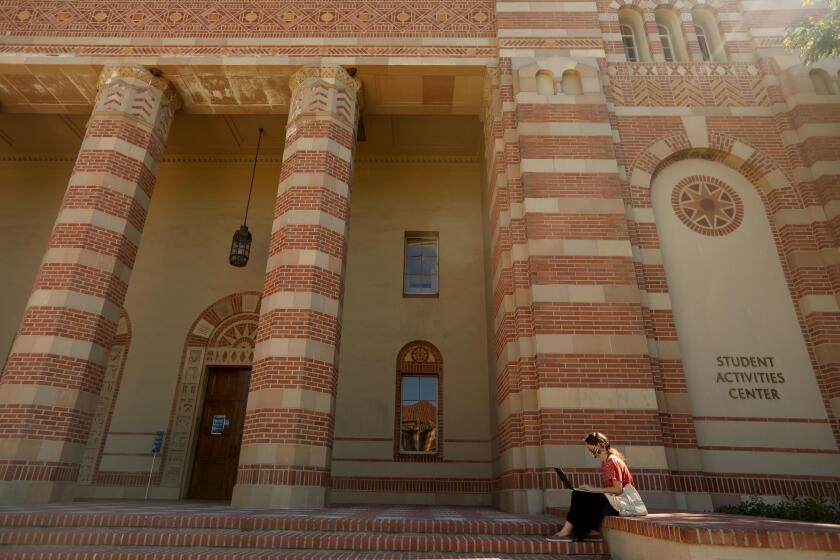Pity the Pedestrian
- Share via
It happened again this month, another sickening hit-and-run accident. An 80-year-old woman walking home from a West Los Angeles video store was struck by a car in the full light of day and left lying on a quiet residential street. Police think the driver anonymously summoned paramedics by cell phone, but that’s apparently where his or her conscience shut down. The victim died after being taken to UCLA Medical Center. On Thursday, a school crossing guard was struck and seriously injured as she pushed a child out of a car’s path.
More than 2,800 pedestrians were hit by motor vehicles within the Los Angeles city limits last year and nearly 200 were killed. A steady decline in pedestrian/vehicle accidents here in recent years is tempered by the knowledge that Los Angeles ranks second only to New York City in the number of pedestrian fatalities. Appallingly, many of these accidents--no one records precisely how many--involved drivers who fled the accident scene.
What kind of creep does this? Police and traffic engineers point to unlicensed drivers, those driving under the influence of drugs or alcohol and drivers who panic. Whatever the reason, there is no justification.
The East Coast rap on Los Angeles, that nobody walks here, is of course an exaggeration. But the truth beneath that glib put-down is that our city streets, designed when speedy movement of auto traffic was the chief and perhaps only consideration, have always been pretty hostile to pedestrians. And as those broad thoroughfares have become choked, drivers too often behave as if those on foot are obstacles in some ghastly video game, to be dodged or eliminated.
Los Angeles surely can do more to make itself friendlier to those walking, and on Thursday the City Council took up the issue. Perhaps the most effective measure would be to increase the number of Los Angeles Police Department traffic officers, the folks who target the reckless and impatient drivers, the drunk drivers and others who shouldn’t be behind the wheel. In 1992, the City Council cut 60 motorcycle officer positions, the front line against these dangerous motorists.
The city should also replace some of the striped crosswalks eliminated when streets were resurfaced. At the same time, the city is experimenting by crosshatching some remaining crosswalks with thicker paint to enhance their visibility to drivers. Of the city’s 40,000 intersections, only 10% have signals, and the city budget allows only 15 to 25 new signals a year. More signals could save lives.
City traffic engineers are also experimenting with so-called smart crosswalks in the San Fernando Valley and downtown. The presence of pedestrians in an intersection activates a flashing beacon. These are cheaper than standard signals and safer than regular crosswalks. And in communities with more senior citizens, some signals are being adjusted to allow extra time for pedestrians to cross.
Reopening and cleaning up some pedestrian tunnels, especially those near schools, that were chained up to prevent crime and graffiti in recent years may help. Crossing guards--or parents--who now usher children across these intersections might instead be posted at tunnels in the morning and afternoon.
None of these measures would stop every reckless driver or safeguard pedestrians who don’t take care. But all of them should help.
More to Read
Sign up for Essential California
The most important California stories and recommendations in your inbox every morning.
You may occasionally receive promotional content from the Los Angeles Times.










